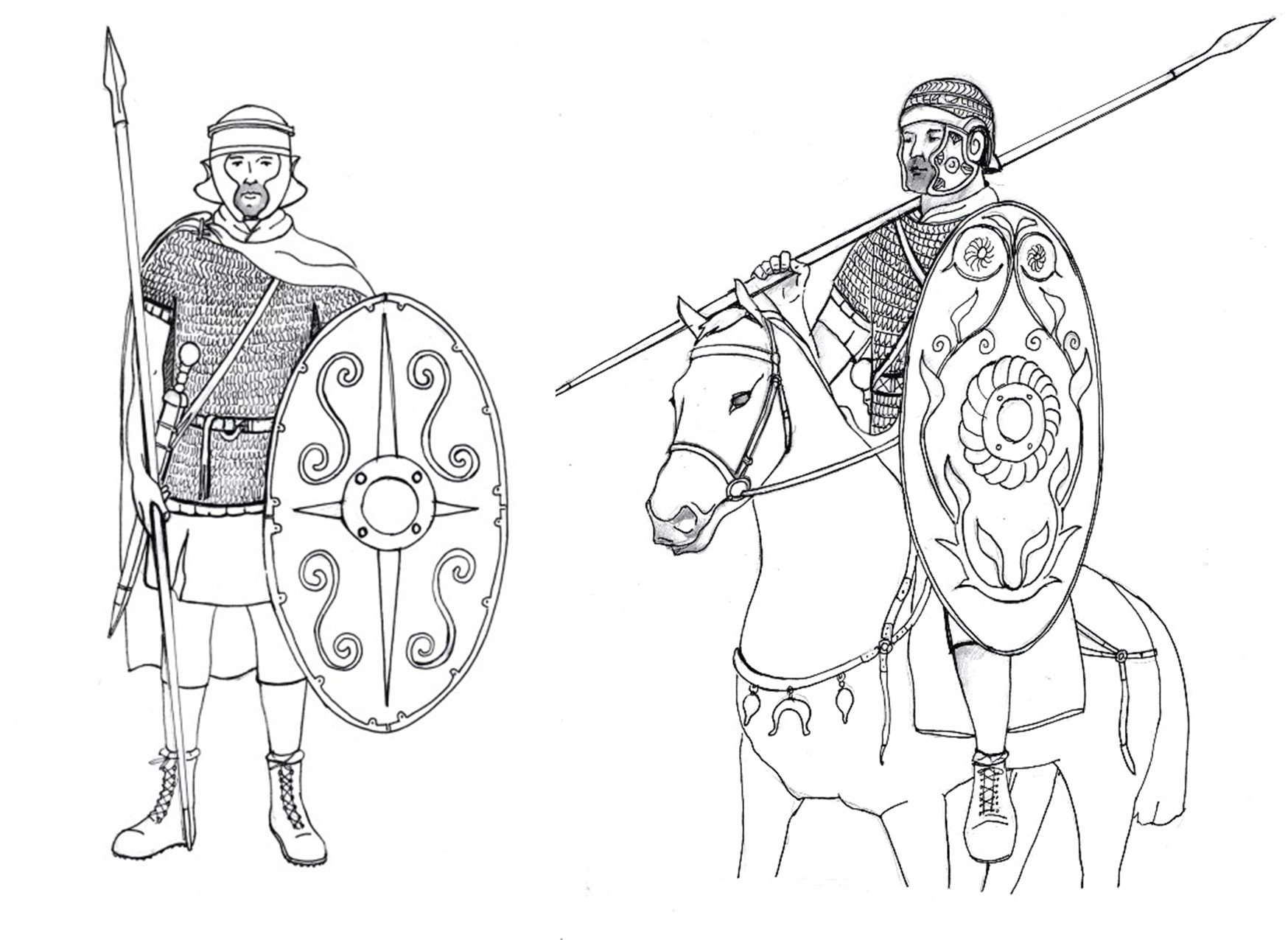Auxiliary Soldiers - an overview to infantry and cavalry soldiers
These teacher notes provide an overview to who the Auxiliary soldiers were. You can download a copy of these teacher notes below.

‘Auxilia’ means help in Latin and the auxiliary soldiers assisted the legionary soldiers by providing extra manpower and in particular specialised fighting techniques.
Originally, they were non-Roman citizens but received their citizenship after being a soldier for 25 years. This continued until the early third century when the emperor made everyone living inside the Empire (apart from slaves) a citizen.
How were auxiliary units organised?
There were three types of auxiliary units: the ala (all cavalry), the cohors equitata (mixed cavalry and infantry) and cohors peditata (all infantry).
At Segedunum, the auxiliary unit was formed of a mixed cavalry (horsemen) and infantry (foot soldiers) unit. This unit originally had around 480 infantry soldiers and 120 cavalry soldiers.
The infantry soldiers were divided into 6 centuries. Each century contained approximately 80 men which were commanded by a centurion.
The cavalry soldiers were divided into four turmae. Each turma had approximately 30 men which were commanded by a decurion.
The overall leader of the auxiliary unit (600 men) was the commanding officer (praefectus).




